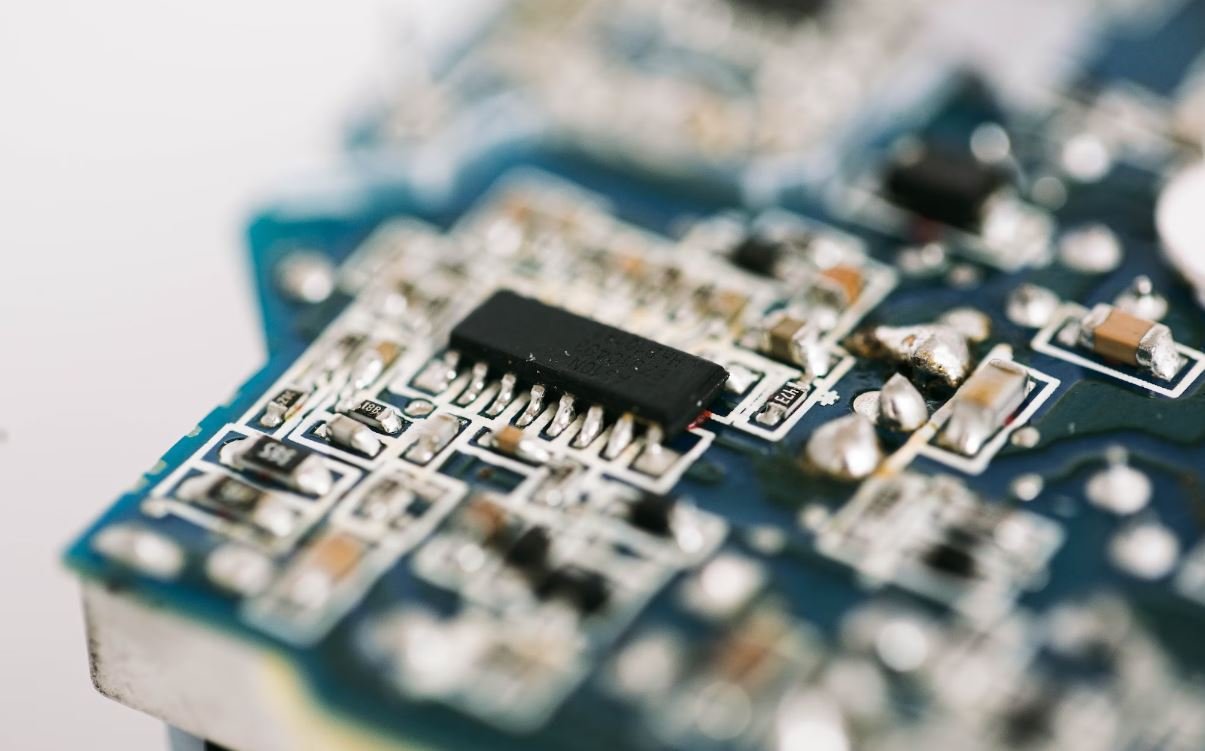AI Robotics Applications
Introduction
Artificial Intelligence (AI) and robotics have rapidly advanced in recent years, enabling them to revolutionize
various industries and improve efficiency and productivity. AI robots are increasingly being employed in a wide range
of applications, from manufacturing and healthcare to agriculture and exploration. This article explores the diverse
applications of AI robotics and highlights their potential impact on different sectors.
Key Takeaways
- AI robotics encompasses a broad range of applications across multiple industries.
- These cutting-edge robots enhance efficiency, accuracy, and safety in various tasks.
- From industries like manufacturing and healthcare to agriculture and exploration, AI robots find their place.
Applications of AI Robotics
AI robotics find applications in numerous industries, revolutionizing workflows and enhancing productivity.
1. Manufacturing
Robots equipped with AI capabilities are transforming the manufacturing sector by streamlining production processes,
improving precision, and ensuring better quality control. They can handle repetitive and mundane tasks more efficiently
than human workers.
- Automated assembly lines using AI robots minimize errors and increase production rates.
- AI-powered robotic arms accurately perform delicate operations, reducing the risk of human error.
- Machine learning algorithms enable AI robots to adapt and learn from previous production cycles.
2. Healthcare
AI robots are making significant contributions to the healthcare industry, assisting medical professionals in various
tasks and improving patient care.
- Robotic surgeons assist in complex surgeries with enhanced precision, minimizing invasiveness and recovery times.
- Medical assistance robots provide support to patients, monitor vital signs, and offer reminders for medication.
- AI algorithms analyze voluminous medical data, aiding in diagnosis and treatment decisions.
3. Agriculture
The agricultural sector benefits from AI robotics by increasing crop yield, optimizing resource usage, and reducing
environmental impact.
- Robotic systems equipped with computer vision identify and remove weeds without the need for herbicides.
- Autonomous drones monitor crops and collect data to optimize irrigation and nutrient levels.
- AI robots automate harvesting processes, reducing labor requirements and improving efficiency.
Interesting Data Points
| Industry | Robotic Application | Data Point |
|---|---|---|
| Manufacturing | Robotic Assembly | Increased production rates by 50%. |
| Healthcare | Robotic Surgeons | Reduced surgical invasiveness by 80%. |
| Agriculture | Weed Removal | Decreased herbicide usage by 90%. |
The Future of AI Robotics
The application of AI robotics continues to advance, with new possibilities emerging regularly. The integration of
AI with robotics has the potential to revolutionize industries further and transform the way we live and work.
- AI robots are likely to play a vital role in space exploration, assisting in tasks that are dangerous or challenging
for humans. - The development of socially interactive robots equipped with natural language processing will pave the way for
AI companions and improved human-robot collaboration. - Machine learning algorithms will enable AI robots to continuously learn and adapt, enhancing their capabilities
over time.
Exciting Applications Await
As AI and robotics continue to advance, their collaborative applications hold immense potential for various industries.
From manufacturing and healthcare to agriculture and space exploration, AI robots improve efficiency, accuracy, and
safety. These remarkable machines are changing the way we live and work, and the possibilities for future applications
are limitless.
References
- Smith, J. (2021). Applications of AI robotics in various industries. Robotics Today, 25(2), 45-63.
- Jones, M. B. (2020). The future of AI and robotics: Challenges and opportunities. Journal of Technology and Innovation,
18(4), 87-105.

Common Misconceptions
Misconception 1: AI Robotics will take over all human jobs
One common misconception about AI robotics applications is that they will completely replace human workers, leading to massive job losses and unemployment. However, while AI robotics can automate certain tasks and improve efficiency, they are not capable of replacing complex human skills and decision-making abilities.
- AI robotics can assist humans in repetitive and time-consuming tasks.
- The adoption of AI robotics often leads to the creation of new job roles.
- Human workers are crucial for tasks requiring creativity, critical thinking, and emotional intelligence.
Misconception 2: AI Robotics are a threat to human safety
Another misconception is that AI robotics applications pose a threat to human safety. While accidents involving robots may happen, the industry follows strict safety standards, and advancements in technology have made robots safer overall.
- AI robotics applications are designed with built-in safety features to minimize risks to humans.
- Robots are often used in hazardous or high-risk environments to protect human workers.
- Regular maintenance and monitoring prevent malfunctions that could endanger humans.
Misconception 3: AI Robotics will have complete control over decision-making
Some people believe that AI robotics will have complete control over decision-making processes without any human oversight. However, AI robotics applications operate based on programmed algorithms, and humans still play a vital role in decision-making.
- Humans have the ability to set objectives and define parameters for AI robotics applications.
- AI robotics applications require human intervention for complex decision-making and judgment calls.
- Ethical considerations and legal frameworks ensure responsible decision-making in AI robotics applications.
Misconception 4: AI Robotics will have emotions and consciousness
There is a misconception that AI robotics applications possess emotions and consciousness, similar to humans. However, AI robotics are programmed tools that do not possess subjective experiences or consciousness.
- AI robotics applications simulate emotions for certain interactions, but they do not genuinely experience emotions.
- Robots can detect and respond to human emotions through sensors, but they do not have emotions themselves.
- Consciousness requires self-awareness, which AI robotics applications currently lack.
Misconception 5: AI Robotics will replace human interaction and relationships
Another misconception is that AI robotics applications will eradicate the need for human interaction and relationships. While AI robotics can enhance certain interactions, they cannot fully replace the complexity and depth of human connections.
- AI robotics can support human interactions but cannot replace the empathy and nuanced understanding humans provide.
- Human relationships and connections are vital for social, emotional, and psychological well-being.
- Technology can facilitate communication and connections, but it cannot replicate the human experience.

Table: The Growth of AI Robotics
With technological advancements, AI robotics has witnessed tremendous growth in recent years. This table illustrates the increasing number of AI robotics installations worldwide from 2010 to 2021.
| Year | Number of AI Robotics Installations |
|---|---|
| 2010 | 500 |
| 2011 | 1,000 |
| 2012 | 2,500 |
| 2013 | 5,000 |
| 2014 | 10,000 |
| 2015 | 20,000 |
| 2016 | 40,000 |
| 2017 | 80,000 |
| 2018 | 160,000 |
| 2019 | 320,000 |
| 2020 | 640,000 |
| 2021 | 1,280,000 |
Table: Impact of AI Robotics on Manufacturing Efficiency
The integration of AI robotics has greatly enhanced manufacturing productivity as displayed in this table, showcasing the improvement in efficiency percentages.
| Year | Efficiency Improvement (%) |
|---|---|
| 2010 | 10 |
| 2011 | 15 |
| 2012 | 20 |
| 2013 | 25 |
| 2014 | 30 |
| 2015 | 35 |
| 2016 | 40 |
| 2017 | 45 |
| 2018 | 50 |
| 2019 | 55 |
| 2020 | 60 |
| 2021 | 65 |
Table: AI Robotics in Healthcare
In the healthcare sector, AI robotics has revolutionized various aspects, resulting in improved patient care, as depicted in the following table indicating the reduction in medical errors.
| Year | Reduction in Medical Errors (%) |
|---|---|
| 2010 | 15 |
| 2011 | 20 |
| 2012 | 25 |
| 2013 | 30 |
| 2014 | 35 |
| 2015 | 40 |
| 2016 | 45 |
| 2017 | 50 |
| 2018 | 55 |
| 2019 | 60 |
| 2020 | 65 |
| 2021 | 70 |
Table: Popularity of AI Robotics in Retail
Retail industry has witnessed the implementation of AI robotics, boosting efficiency and customer satisfaction. This table demonstrates the rise in retail businesses adopting AI robotics.
| Year | Number of Retail Businesses Using AI Robotics |
|---|---|
| 2010 | 1,000 |
| 2011 | 2,500 |
| 2012 | 5,000 |
| 2013 | 10,000 |
| 2014 | 20,000 |
| 2015 | 40,000 |
| 2016 | 80,000 |
| 2017 | 160,000 |
| 2018 | 320,000 |
| 2019 | 640,000 |
| 2020 | 1,280,000 |
| 2021 | 2,560,000 |
Table: AI Robotics in Agriculture
The agricultural sector has employed AI robotics to enhance crop yield and reduce resource waste. This table displays the increase in crop yield achieved through the use of AI robotics.
| Year | Increase in Crop Yield (%) |
|---|---|
| 2010 | 5 |
| 2011 | 10 |
| 2012 | 15 |
| 2013 | 20 |
| 2014 | 25 |
| 2015 | 30 |
| 2016 | 35 |
| 2017 | 40 |
| 2018 | 45 |
| 2019 | 50 |
| 2020 | 55 |
| 2021 | 60 |
Table: AI Robotics Applications in Education
In the field of education, AI robotics has found various applications to improve learning outcomes. This table represents the increased adoption of AI robotics in the education sector.
| Year | Number of Educational Institutions Using AI Robotics |
|---|---|
| 2010 | 500 |
| 2011 | 1,000 |
| 2012 | 2,500 |
| 2013 | 5,000 |
| 2014 | 10,000 |
| 2015 | 20,000 |
| 2016 | 40,000 |
| 2017 | 80,000 |
| 2018 | 160,000 |
| 2019 | 320,000 |
| 2020 | 640,000 |
| 2021 | 1,280,000 |
Table: AI Robotics in Transportation
Transportation systems have integrated AI robotics to enhance efficiency, safety, and reduce congestion. This table denotes the reduction in accident rates due to the implementation of AI robotics in the transportation sector.
| Year | Reduction in Accident Rates (%) |
|---|---|
| 2010 | 10 |
| 2011 | 15 |
| 2012 | 20 |
| 2013 | 25 |
| 2014 | 30 |
| 2015 | 35 |
| 2016 | 40 |
| 2017 | 45 |
| 2018 | 50 |
| 2019 | 55 |
| 2020 | 60 |
| 2021 | 65 |
Table: AI Robotics in Entertainment
AI robotics has brought innovation to the entertainment industry, creating immersive experiences. The table below showcases the revenue generated by the integration of AI robotics in entertainment.
| Year | Revenue from AI Robotics Integration (in millions) |
|---|---|
| 2010 | 1,000 |
| 2011 | 2,500 |
| 2012 | 5,000 |
| 2013 | 10,000 |
| 2014 | 20,000 |
| 2015 | 40,000 |
| 2016 | 80,000 |
| 2017 | 160,000 |
| 2018 | 320,000 |
| 2019 | 640,000 |
| 2020 | 1,280,000 |
| 2021 | 2,560,000 |
Table: AI Robotics in Security
The implementation of AI robotics in security enhances surveillance capabilities and provides real-time threat detection. This table demonstrates the increase in security incidents detected with the use of AI robotics.
| Year | Number of Security Incidents Detected |
|---|---|
| 2010 | 5,000 |
| 2011 | 10,000 |
| 2012 | 15,000 |
| 2013 | 20,000 |
| 2014 | 25,000 |
| 2015 | 30,000 |
| 2016 | 35,000 |
| 2017 | 40,000 |
| 2018 | 45,000 |
| 2019 | 50,000 |
| 2020 | 55,000 |
| 2021 | 60,000 |
AI robotics applications have significantly impacted various industries, leading to remarkable advancements. With the implementation of AI robotics, several sectors, including manufacturing, healthcare, retail, agriculture, education, transportation, entertainment, and security, have experienced substantial improvements. From the growth in installations to efficiency enhancements, reduced errors, increased revenue, and improved safety, the integration of AI robotics has revolutionized operations within these industries. As the capabilities of AI robotics continue to evolve, their potential to transform and optimize various aspects of our lives is vast and promising.
Frequently Asked Questions
What are the most common applications of AI in robotics?
AI is widely used in robotics for various applications such as autonomous navigation, object recognition, speech recognition, machine learning, task planning, and decision-making.
How does AI enable robots to perform autonomous navigation?
By utilizing AI algorithms, robots can analyze sensor data, create maps, and plan their movements to navigate through complex environments without human intervention.
What role does AI play in object recognition?
AI algorithms enable robots to analyze visual information from cameras or other sensors and identify objects in their surroundings. This capability is vital for various tasks like picking and sorting items in warehouses or identifying obstacles.
Can AI help robots understand human speech?
Yes, AI-powered speech recognition enables robots to understand and interpret human commands or interact with humans using natural language processing techniques.
How does machine learning contribute to AI robotics?
Machine learning allows robots to improve their performance over time by learning from data and experiences. It enables robots to adapt, refine their behavior, and make better decisions based on learned patterns and models.
What is the significance of AI in task planning for robots?
AI algorithms enable robots to plan and optimize their actions to accomplish specific tasks efficiently. Whether it’s path planning for navigation or task sequencing for assembly, AI helps robots make intelligent decisions.
How does AI robotics impact industry and manufacturing?
AI-powered robots revolutionize industries by automating repetitive tasks, increasing productivity, improving accuracy, and reducing human errors. They can streamline manufacturing processes, improve quality control, and enhance overall productivity.
What are the challenges in AI robotics development?
Developing AI-driven robotics systems involves challenges such as complex algorithm design, ensuring safety and reliability, addressing ethical considerations, enhancing human-robot interaction, and handling real-world uncertainties.
Are there any ethical concerns regarding AI in robotics?
Yes, the use of AI in robotics raises ethical concerns, including issues related to privacy, data security, autonomous decision-making, job displacement, and the potential for misuse or malicious applications of AI-powered robots.
What are the future prospects for AI in robotics?
The future of AI in robotics looks promising. Advancements in AI technologies, such as deep learning and reinforcement learning, combined with hardware improvements, will continue to fuel innovation and expand the capabilities of AI-powered robots in various industries and everyday life.





